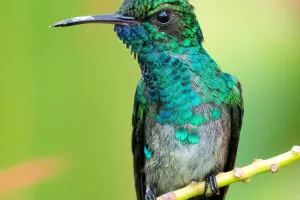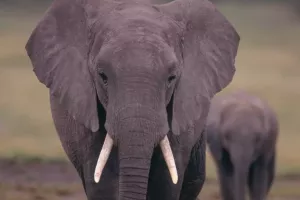On the southernmost part of the earth, there is a group of strange creatures living, and they are penguins. The environment of Penguin's life is the Antarctica of the ice and snow all year round. Not only did they live well on land, but they also swim underground from time to time. Penguins are generally synonymous with cuteness and are loved by many people.
Every April, penguins return to the original habitat and incubate cubs in winter in the southern hemisphere. During this period, they need to resist hunger and cold, including the extreme cold of -50 degrees and snowstorms. Little penguins will face the danger of being prey, and adult penguins foraging in the sea will also encounter the hunting of seals. If an adult penguin is killed unfortunately, its partner will leave a cub who is being raised and returns to the ocean for food alone. The little penguin can only face the threat of severe cold and natural enemies alone. After growing up, the little penguin will leave the base camp in December and return to the sea.
We all know that penguins usually live in coastal and relatively cold areas, and only a few penguins live in warm areas. The living environment of penguins is really crisis for them, so penguins are generally in groups of activities to ensure their own safety.
Penguins are very afraid of darkness. This is not because their vision is not good, but because they are afraid of being discovered by predators. Seals are animals that are active at night, so what penguins need to avoid is the seal. Although there will be more fish and shrimp in the ocean at night, the penguins prefer to come out during the day to prey without adventure at night.
Many people are curious why penguins are not afraid of cold? Let's reveal this puzzle for you today.
Penguins are currently one of the few birds in the world that can adapt to the cold waters, which is due to their physical structure. If creatures want to survive, they must adapt to changes in the environment. Penguins are a typical example. They look like a scales -shaped feather coat, which is thick and dense. Penguins will not fly, and the role of penguin wings has been transformed from flying to swimming.
In addition to the unique body structure, the ability of penguins to regulate metabolism is also amazing. The blood circulation in the penguin is similar to the human blood circulation, and it is all parts that flow through the whole body, such as heart, brain, lung, and so on. The reason they have excellent regulation is because they can use their energy through physical tissues.
When penguins walking on the land, they looked very bulky. But once in the sea, penguins are the absolute swimming generals. The fastest swimming penguin in the world is Papuran Penguin. They have less than 1 meter long and weigh only about 6 kg. But under the water, the sprint speed of their swimming can reach 27km/h, which is comparable to the flying speed of many birds. When they dive, they can dive to a depth of nearly 300 meters, and even stay underwater for 20 minutes.
Nature will not give all the skills of a certain species. In order to adapt to the environment, animals need to give up a certain talent to get a new skill. Ten years ago, penguins, in order to prey in richer food in the sea, penguins resolutely gave up their ability to fly, and then became the masters of swimming in birds. Maybe this is the fairness of nature.


